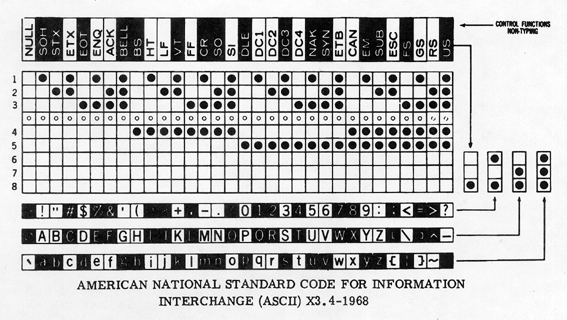Paper tape

From the early days of computing up till well into the 70's, paper tape was heavily used in the computer industry as a cheap and reliable means of data storage. Besides, it was used in telecommunications (telex), and in the printing industry as the input medium for hot-metal typesetting machines. Up till the turn of the century it has been in use for numerical control of milling and drilling machines. For heavy duty applications, paper was often replaced by synthetic materials like mylar.
In computer applications, tapes were usually 1 inch wide with 8 information hole positions and one sprocket feed hole in each row, see the top illustration [1]. Occasionally, the narrower 7, 6 or 5 'channel' varieties were used. The dimensions were well standardized; hence all varieties could be read on an single tape reader with a minimum of adjustment. One meter of 8-channel tape can contain about 400 bytes of data.
Paper tape punches have been built with operating speeds from 10 - 300 rows per second. Tape readers worked either mechanically (with sense pins) or electro-optically. Using the latter technique, very expensive readers could handle up to 2000 [3] rows per second while being able to stop on one row. For such fast readers, special equipment (servo-controlled reels) was needed for feeding the tape to and from the reader.
A simple solution used with medium-speed readers (300 rows/s) was to use fan-fold tape, which re-folds automatically if it is catched from the reader in an appropriately dimensioned receptacle.
Special equipment existed for comparing tapes: for critical applications, data entry was done by two typists at the same time. By comparing the resulting tapes typing errors could be detected. Paper tapes could be corrected, edited or repaired easily by manually adding missing holes, or by cut-and-paste operations, using some very simple mechanical tools.

System software for the early PDP8 and PDP11 machines in our collection was distributed on papertape; we have an almost complete set.

References:
- Handbook of Automation, Computation and Control, Wiley 1959
- Teletype Technical Manual, Teletype Corporation 1964
- J.M. Visscher: Een snelle ponsbandlezer. Philips Technisch Tijdschrift 28 (1967) pp161-172 (In Dutch)
